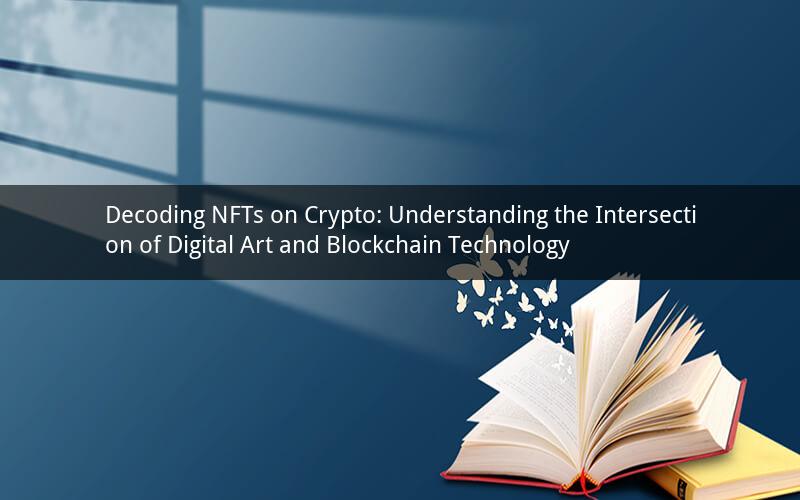
In the rapidly evolving world of digital currencies, Non-Fungible Tokens (NFTs) have emerged as a revolutionary concept that is bridging the gap between digital art and blockchain technology. What is NFT on crypto? This article delves into the basics of NFTs, their significance in the crypto market, and how they are transforming the way we perceive and own digital assets.
What are NFTs?
At its core, an NFT is a unique digital asset that exists on a blockchain network, typically the Ethereum network. Unlike fungible tokens like Bitcoin or Ethereum, NFTs cannot be exchanged on a one-to-one basis because each token represents a distinct item, making them non-fungible. These items can range from digital art to collectibles, real estate, music, and more.
How do NFTs work on the crypto network?
NFTs leverage blockchain technology to establish ownership, authenticity, and uniqueness. When a creator or owner mints an NFT, they lock it on the blockchain, ensuring that it cannot be duplicated or altered. This immutable record of ownership is maintained on the blockchain, providing a transparent and secure way for buyers and sellers to verify the authenticity of an NFT.
Why are NFTs significant in the crypto market?
The NFT market has grown exponentially, thanks to its ability to bridge the gap between digital art and traditional finance. Here are some reasons why NFTs are significant in the crypto market:
1. Unique ownership: NFTs allow artists, creators, and collectors to have exclusive ownership over digital assets, ensuring that they receive proper recognition and compensation for their work.
2. Digital art democratization: NFTs provide a platform for artists to showcase their work to a global audience without the need for intermediaries, such as galleries or art dealers.
3. Asset tracking: NFTs offer a secure and transparent way to track the provenance and ownership history of digital assets, making it easier for collectors to verify authenticity and value.
4. Investment opportunity: As the NFT market continues to grow, NFTs are increasingly being seen as an investment opportunity, with some digital assets commanding high prices and attracting significant interest from collectors and investors alike.
How are NFTs transforming the digital art world?
NFTs have revolutionized the digital art world by providing artists with a new, innovative way to distribute and monetize their work. Some key ways NFTs are transforming the digital art world include:
1. Art ownership democratization: NFTs enable artists to reach a broader audience, allowing fans and collectors from all over the world to purchase and own their artwork.
2. Art sales transparency: With NFTs, the entire sales process is transparent, as every transaction is recorded on the blockchain. This makes it easier for artists to track sales, royalties, and audience engagement.
3. Art appreciation: As NFTs become more mainstream, the digital art world is experiencing a surge in appreciation and recognition for digital artists, fostering a new wave of innovation and creativity.
What are the challenges facing the NFT market?
Despite the rapid growth and widespread adoption of NFTs, there are several challenges facing the market:
1. High transaction fees: Ethereum's network congestion has led to soaring gas fees, making it difficult for some users to purchase NFTs.
2. Security concerns: While blockchain technology provides a secure platform for NFTs, the digital art world remains vulnerable to scams, phishing attacks, and other cybersecurity threats.
3. Regulatory uncertainty: The NFT market is still in its infancy, and regulatory frameworks are yet to be fully established. This uncertainty may hinder the growth of the market and deter potential investors.
4. Environmental impact: The energy consumption of blockchain networks, particularly Ethereum, has raised concerns about the environmental impact of NFTs.
Frequently Asked Questions (FAQs) about NFTs on crypto:
1. What is the difference between NFTs and cryptocurrencies?
- NFTs are unique digital assets that cannot be exchanged on a one-to-one basis, while cryptocurrencies like Bitcoin and Ethereum are fungible and can be exchanged for equal value.
2. Can I own multiple NFTs?
- Yes, you can own multiple NFTs, as each NFT represents a unique digital asset that cannot be duplicated or exchanged on a one-to-one basis.
3. How do I purchase an NFT?
- You can purchase NFTs through various platforms and marketplaces that specialize in digital art and collectibles. Some popular NFT marketplaces include OpenSea, Rarible, and Foundation.
4. Can NFTs be sold for real money?
- Yes, NFTs can be sold for real money. Many artists and creators are earning significant profits by selling their NFTs to collectors and investors.
5. Are NFTs a good investment?
- Whether NFTs are a good investment depends on your individual risk tolerance and investment goals. While the NFT market has experienced significant growth, it is important to conduct thorough research and consult with financial experts before investing.
In conclusion, NFTs have become an integral part of the crypto market, revolutionizing the digital art world and creating new opportunities for artists, collectors, and investors. Understanding the basics of NFTs, their significance, and the challenges facing the market can help you navigate this emerging space and make informed decisions about your involvement in the NFT community.